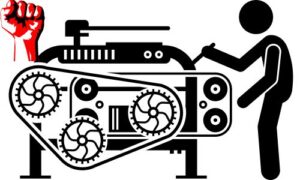Statistics Fundamentals
Data scientists are in high demand, and they are replacing legacy statisticians in some cases. Statistics, on the other hand, are critical in data science. While a career in data science may appear appealing and approachable, prospective data scientists should consider their level of comfort with statistics before taking the next step, such as earning a master’s degree in data science. Although statistics may appear to be a difficult subject, some fundamental concepts will help you understand it better. This blog will look at some of those fundamental concepts, how they relate to one another, and how we apply them in our daily lives. Note: If you are a student and you are unable to complete your JMP assignments on time. Then you can get the best JMP Assignment Help from our professionals.
Statistic Definition
Statistics is a branch of mathematics concerned with the collection, analysis, interpretation, and presentation of large amounts of numerical data. When you combine programming and machine learning, you have a great description of the core skills for data science.
Machine learning algorithms must be evaluated and optimised. Also used for data analysis, transformation, and cleaning. Furthermore, statistics are used in almost every aspect of data science. Furthermore, statistics are used in the presentation of insights and findings.
Discuss The Fundamental Concepts Of Statistics
Statistics is a vast subject, making it difficult to determine what you need to learn and in what order. Furthermore, once you understand the fundamental concepts, learning and applying Machine Learning concepts will be much easier. We will go over some of the most fundamental and important statistics topics.
Descriptive Statistics as a Concept
Descriptive statistics, as the name implies, aid in the description of data. Furthermore, it makes no predictions, assumptions, or inferences; it simply describes the data sample we have. In other words, it enables us to comprehend the underlying characteristics.
Descriptive statistics, on the other hand, are derived from calculations, which are commonly referred to as parameters. These are some examples:
- The mean, also known as the average, is the central value.
- The median is the value obtained by ordering the data from low to high and dividing it exactly in half.
- The mode is the most commonly used value.
The Variability Concept
The next concept on the list of statistics fundamental concepts is variability. It also includes the following parameters:
- Percentiles: It’s a measurement unit that indicates the value at which a given percentage of observations in a group falls.
- Quantiles: They are values that divide the total number of data points into four roughly equal quarters.
- Interquartile Range (IQR): A statistical measure of dispersion and variability based on the division of a data set into quartiles.
- Variance: The average squared difference in values from the mean is used to determine how a data set should be spread out in relation to the mean.
- Standard Deviation: The difference between each data point and the mean, as well as the square root of the variance, is the standard deviation.
- Standard Error: An estimate of the standard deviation of the sampling distribution.
Correlation Theory
It is a crucial statistical technique for determining the relationship between two variables. The correlation coefficient also assesses the strength of a two-variable linear relationship.
- To begin, a correlation coefficient greater than zero indicates that there is a positive relationship.
- A correlation coefficient less than zero, on the other hand, indicates a negative relationship.
Probability Theory
It specifies the likelihood of each possible outcome. In layman’s terms, an event is the result of an experiment, such as tossing a coin. There are, however, two types of events: dependent and independent.
- First, an event is said to be independent if it is unaffected by previous events.
- A dependent event is one whose occurrence is dependent on previous events.
The probability of independent events is calculated by simply multiplying the probability of each event, whereas the probability of dependent events is calculated using conditional probability.
Regression Theory
It is a technique for determining the relationship between one or more independent and one or more dependent variables. There are, however, two types of regression:
- Linear Regression: This technique fits a regression model that explains the relationship between one or more predictor variables and a numeric predictor variable.
- Logistic Regression: A regression model that explains the relationship between one or more predictor variables and a binary response variable is fitted using this technique.
As a result, these statistics are fundamental concepts for data scientists.
Conclusion
This blog post discusses statistics and fundamental concepts for data scientists. Furthermore, understanding the fundamental concepts of statistics is beneficial to everyone. Furthermore, it will be sufficient for you to understand the fundamental concepts and the remainder of what you can learn on your own. Statistics is a branch of research that investigates and analyses data. It can also solve practical problems in business, social sciences, medicine, and other fields. This post goes over the fundamentals of statistics and how they are used in business.






